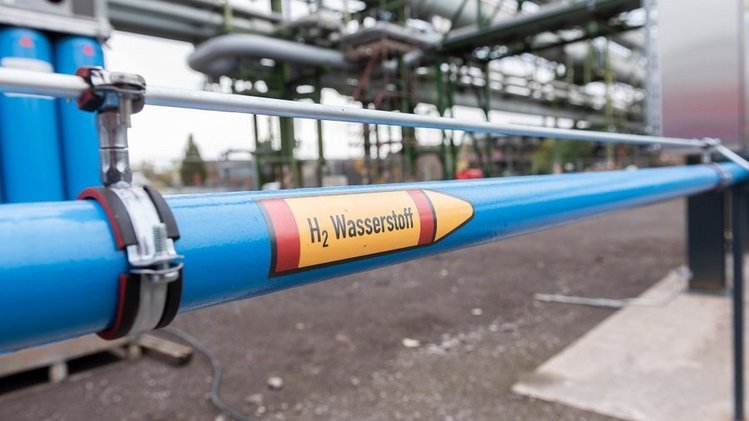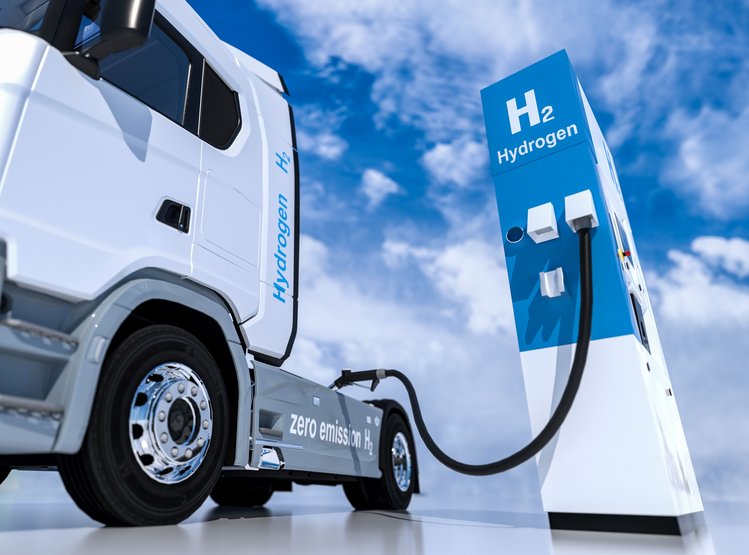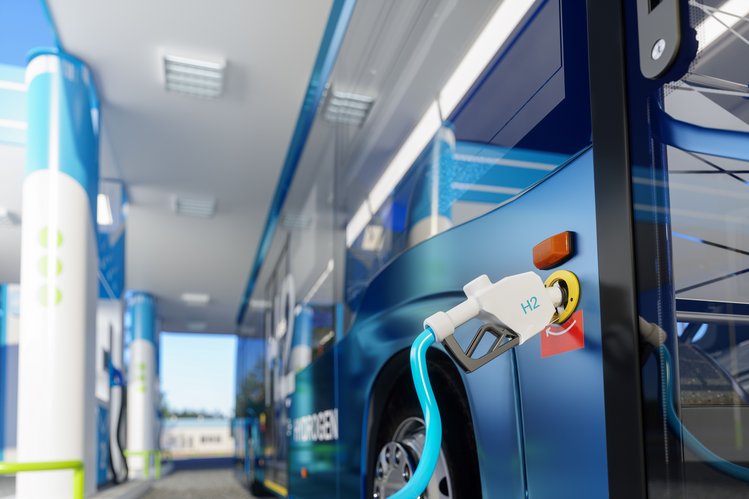The use of hydrogen as a storable energy source is increasingly coming to the centre of attention in Germany. Its manifold potential applications are already being exploited in some sectors. Where and to what extent hydrogen will be used as an energy source in the future depends primarily on its availability and its given economic viability compared with alternatives.
Broad range of applications
The German government sees climate-friendly hydrogen as an indispensable alternative to fossil fuels and a key element for the success of the energy transition. In the update of its National Hydrogen Strategy (NWS) from July this year, the government stated that hydrogen and its derivatives (i.e., gaseous or liquid energy carriers based on green hydrogen such as ammonia or methane) should be used primarily in industrial applications and transport by 2030. Hydrogen will also play a role in power generation in an energy supply based on renewable energies: Unlike electricity, it is an energy source that can be stored in large quantities and can compensate for the intermittent nature of solar and wind power. It can also be used in the heating market, but only to a very limited extent until 2030. According to the Federal Environment Agency, the use of hydrogen is particularly useful where it is not technically possible to use renewable energy and electricity directly.
Decarbonising industry
In general, hydrogen can be used in industrial processes in three different ways: as process heat, as a feedstock and for the production of steel and the processing of crude oil in refineries. Process heat is needed for certain technical processes for the production or further processing of important products, e.g., in the metals, glass or ceramics industries. The use of climate-friendly hydrogen can make a significant contribution to reducing CO2 emissions, particularly in high-temperature processes of up to well over 1,000 degrees Celsius. Hydrogen can also be used as a raw material for synthetic fuels and in the chemical industry, for example in the production of fertilisers. A third application where hydrogen can be used to save large amounts of carbon dioxide is in steel production using the direct reduction process and in the processing of oil products in refineries.
By comparison, the decarbonisation of cement production is much more difficult. Regardless of the energy source used, some of the CO2 released during cement production comes from the raw materials used and cannot be avoided. Carbon capture and storage (CCS) would therefore also be required to produce climate-neutral cement.
A look at Germany's largest steel producer, Thyssenkrupp, shows that the conversion process in the steel industry is already in full swing. With the help of subsidies from the federal government and the state of North Rhine-Westphalia, the company is planning to replace its four coal-fired blast furnaces in Duisburg with so-called direct-reduction plants, which will run on natural gas and, increasingly, hydrogen. Even if the production of climate-neutral steel is initially more expensive than conventional steel production, the latter will no longer be an economically viable alternative in the future. The main reason for this is the high CO2 emissions associated with steel production: 1.7 tonnes of CO2 are emitted per tonne of steel. In addition, the rising price of CO2 emission allowances in Europe and the dwindling number of free allowances make conventional steel production less economical.

Climate-friendly mobility with hydrogen
In the transport sector, hydrogen will be used primarily in heavy commercial vehicles such as trucks, as well as in air and sea transport. In addition to the direct use of hydrogen as a fuel, the production and use of hydrogen-based green fuels (e-fuels) in particular is to be accelerated. Regarding general road transport, the NWS states that the supply of a refuelling infrastructure developed in line with demand should be ensured. It is currently difficult to assess whether a nationwide hydrogen infrastructure for passenger cars will be established in Germany. However, various studies show that electric cars perform significantly better than hydrogen vehicles in a direct comparison, both economically and ecologically. Another potential application for hydrogen could be rail transport. Deutsche Bahn, for example, is working on solutions with its "H2goesRail" project and hopes to start trial operations in 2024.


Important secondary roles in the electricity and heat sectors
In the electricity sector, hydrogen has a complementary role and, according to the NWS, serves to secure the energy supply. When used in gas-fired power plants and fuel cells, it can secure the electricity supply in the future when wind power and photovoltaic systems are unable to provide sufficient energy due to weather conditions. Specifically, gas-fired power plants are to be built which will latter also be able to convert hydrogen into electricity, i.e., to be "H2-ready". Electrolysers will also be integrated into the electricity grid. Overall, hydrogen can be produced flexibly when there is a surplus of electricity and can be converted back into electricity when there is a surplus.
There are three options for using hydrogen in the heating sector: using the waste heat from an electrolyser in heating networks, feeding hydrogen into the existing gas network or using hydrogen directly in combined heat and power (CHP) plants. Last year's CHP Act already stipulated that new CHP plants with an electrical output of at least 10 MW must demonstrate that they can be converted to run on hydrogen at a later date. However, the hydrogen strategy assigns only a secondary role to the use of hydrogen in the heating sector in pilot projects until 2030. This is not least due to the fact that there are fuel-free and more economical alternatives from renewable energies such as solar thermal energy, geothermal energy and ambient heat for heating buildings. The situation is different for industrial process heat: While space heating and hot water use relatively low temperatures, some processes in the chemical or glass industries, for example, require temperatures of around 1,000 degrees Celsius, which are difficult to achieve with heat pumps.
Conclusion
The potential for using hydrogen in Germany is high, but the focus will initially be on industry and the transport sector. Here, low-carbon hydrogen can make a decisive contribution to decarbonisation - for example in the steel industry or in heavy goods transport. The political framework conditions, such as the planned further increase in the cost for CO2 emission permits, play a decisive role in setting the course today. The role that hydrogen will play in the electricity sector will also depend on the need for new power plant units to secure the energy supply in the event of insufficient production from renewable energies. This is because the coal-fired power stations that are still in operation will also be shut down over the next decade. And in the heating sector, hydrogen will certainly compete in the long-term with the increasingly widespread heat pump technologies - but these also require electricity, which must be generated in climate-neutral power plants if renewable energies are not sufficiently available.